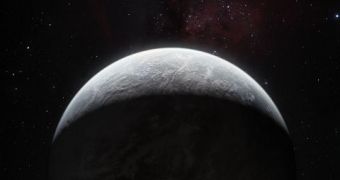Thanks to a recent study conducted by experts at the European Southern Observatory (ESO), the total number of confirmed extrasolar planets now exceeds 600. The investigation uncovered 50 exoplanets, of which 16 are part of the super-Earth class. One of the latter lies in its star's habitability zone.
For the new investigation – the results of which were announced on September 12 at a conference – experts used the HARPS (High Accuracy Radial velocity Planet Searcher) spectrograph on the ESO 3.5-meter telescope, at the La Silla Observatory, in Chile.
Last month, about 573 exoplanets were confirmed and recognized as such. The differences in number occur when taking into account the various definitions that people give these alien worlds, and how each group classifies them.
What is known for sure is that the number will continue to rise. The NASA Kepler Telescope, an observatory dedicated exclusively to exoplanetary research, has already identified 1,235 candidates. All these objects are currently being verified by other telescopes.
According to NASA official Wesley Traub, the 1,000 mark will be reached very soon, perhaps by the end of 2012, if not sooner. The expert holds an appointment as the chief scientist at the Jet Propulsion Laboratory (JPL) Exoplanet Exploration Program, in Pasadena, California.
“The next big milestone should be 1,000. We are learning that there are so many planets out there, and many stars have multiple planets around then, that it's just a question of time until we get to that 1,000 mark of confirmed planets,” he explains, quoted by Space.
“As technologies get better, we are able to discover things that are smaller and have smaller signals, whether it's radial velocities or transits,” Traub explains. He says that the most important objective of such studies is finding an Earth-like planet.
“People have always been looking for these small planets, but we're pushing really hard to make radial velocity work better so we can find something like Earth. That's basically the holy grail of radial velocity. The same thing is true about transits,” the investigator adds.
He explains that the exoplanet called HD 85512 b is one of the 16 super-Earth exoplanets discovered by the new ESO study. The object lies on the fringes of its parent star's habitability zone, which is the area in any star system where temperatures are just right for holding liquid water.
Over the next few years, thousands more exoplanets are expected to be discovered, as astronomers perfect their scanning techniques. It's highly unlikely that a final count will ever be achieved, since a potentially limitless number of new worlds await to be discovered throughout the Universe.

 14 DAY TRIAL //
14 DAY TRIAL //